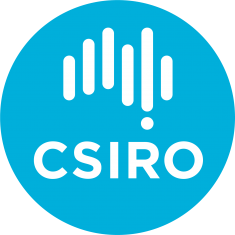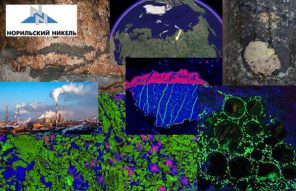|


Friday 24 July 2020
Webinar begins at 1:00pm AWST
Abstract: Over the last six years, the CSIRO Ore Deposit Petrology Nickel team has been applying a range of new characterisation techniques to a suite of samples from the supergiant Norilsk-Talnakh orebodies in Arctic Siberia. This is the largest camp of its type in the world, containing well over a trillion dollars’ worth of Ni, Cu and PGEs in magmatic sulfide ores formed in subvolcanic intrusions. Among other things, our work has shown that some of the most spectacular features of these orebodies arise from the shallow depth of emplacement and extensive interaction with evaporitic country rocks, which resulted in explosive degassing of the magmas. This formed part of a province-wide event that had catastrophic climate consequences, leading to the greatest mass extinction in Earth history. In this group presentation we cover some of the science behind these discoveries and show how you can make your own Norilsk orebody by mixing alka-seltzer with salad dressing…
Access details below: when joining please turn off your video and mute your microphone. There’ll be a chance to ask questions via the chat window.
You can join this CSIRO Webex conference from Desktop or Mobile Devices Here
Dr Steve Barnes is an economic geologist with particular interests in magmatic ore deposits, layered intrusions and Archean volcanism. He has been with CSIRO in Perth since 1985, with a brief interlude in the exploration industry, and formerly led the Ore Deposit Petrology team in CSIRO Mineral Resources. He has published over 180 journal papers and book chapters covering ore deposits and host rocks on six continents. He was the recipient in 2011 of the Gibb-Maitland Medal of the Geological Society of Australia WA Division for services to Western Australian geology.
Dr Margaux Le Vaillant is a Research Scientist working with CSIRO based in Perth, Australia, leading the Ore Deposit Petrology team. Her expertise is in Geology, Ore deposits genesis and footprints, particularly magmatic nickel systems. Her PhD focussed on hydrothermal footprints around altered magmatic nickel deposits, applying pXRF methodology among other techniques. She has extensive experience with microbeam X-ray characterisation techniques on rocks and ores.
Dr Louise Schoneveld is a postdoctoral fellow at CSIRO. She obtained her bachelors and honours in geology from James Cook University, Townsville and in 2018 graduated with a PhD from the Australian National University (ANU). During her PhD she focussed on the experimental partitioning of trace elements between plagioclase, clinopyroxene and melt to understand what controls trace element signatures in these common minerals. Currently she is focussed on investigating the trace element signatures in minerals as possible indicators for economic mineralisation.
Dr Morgan Williams is a postdoctoral fellow within CSIRO Mineral Resources’ Geoscience Analytics and Ore Deposit Petrology teams. Since completing a PhD in stable isotope geochemistry at the Australian National University, he’s been integrating geoscience domain knowledge with data science approaches and tools to interrogate large geochemical datasets and develop open software for geoscientists (including `pyrolite`). Recently he’s been working on multivariate lithogeochemical classification and digging into some of the uncertainties in the geochemical record of secular change.